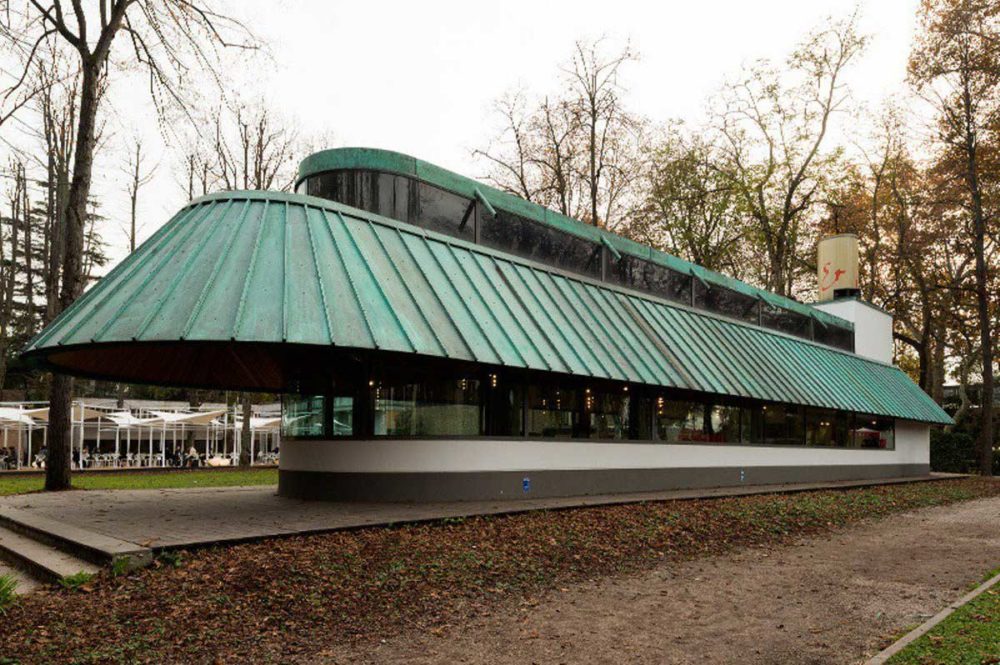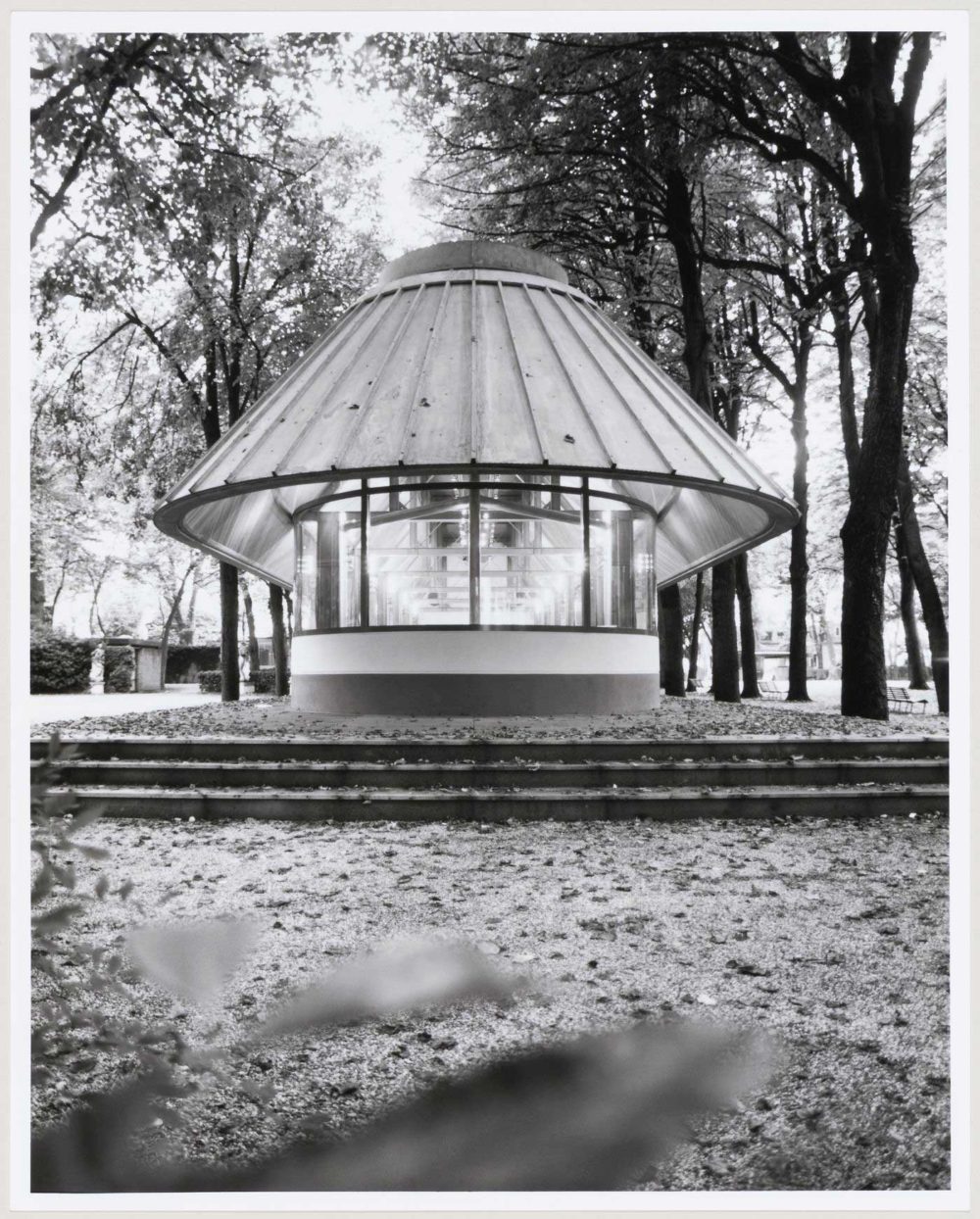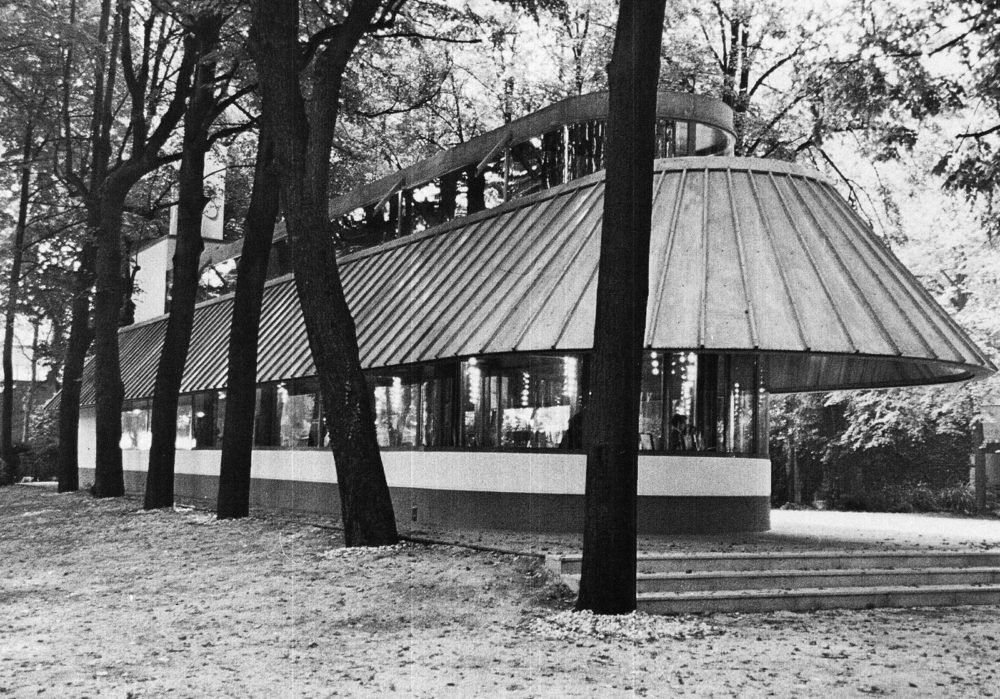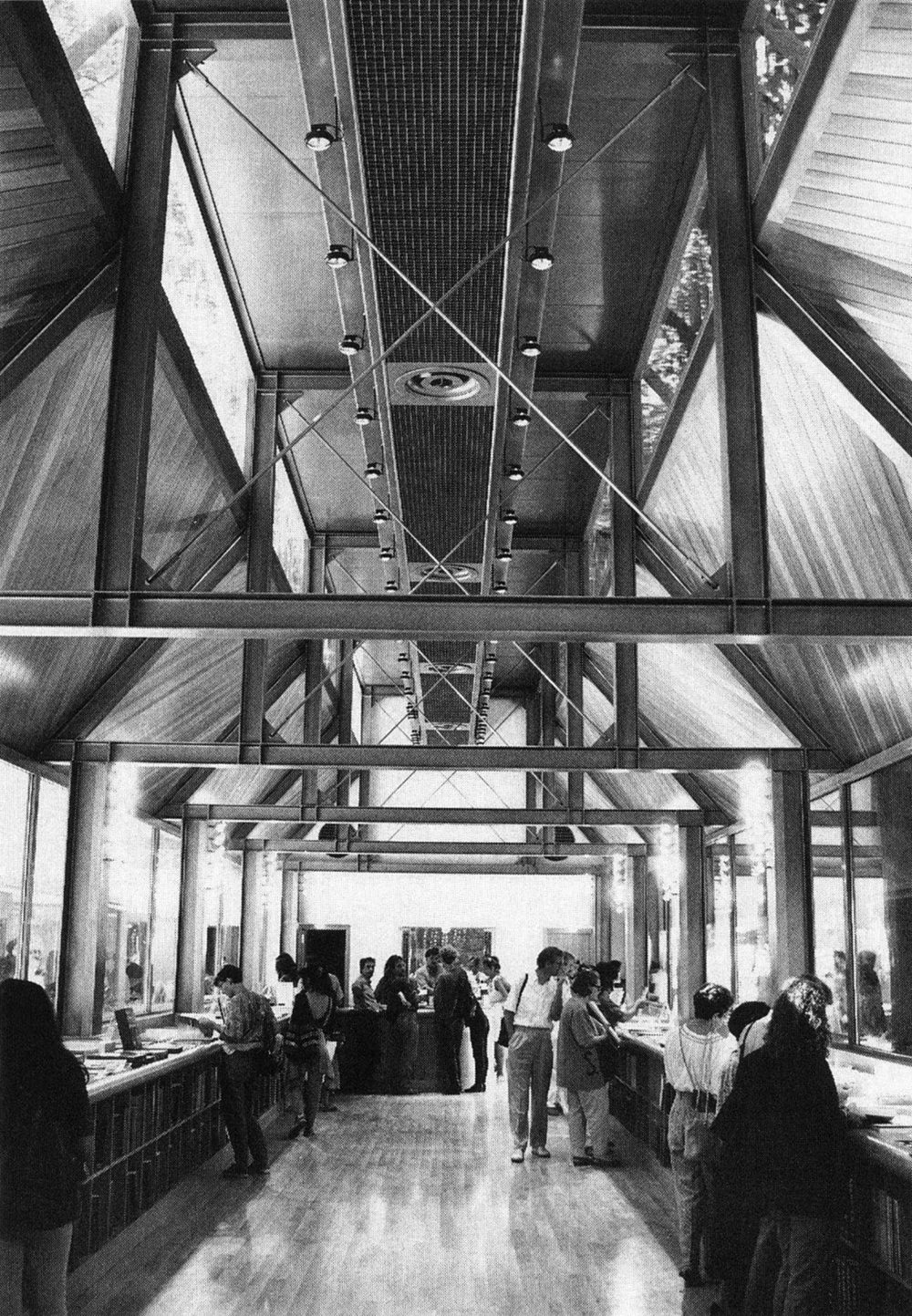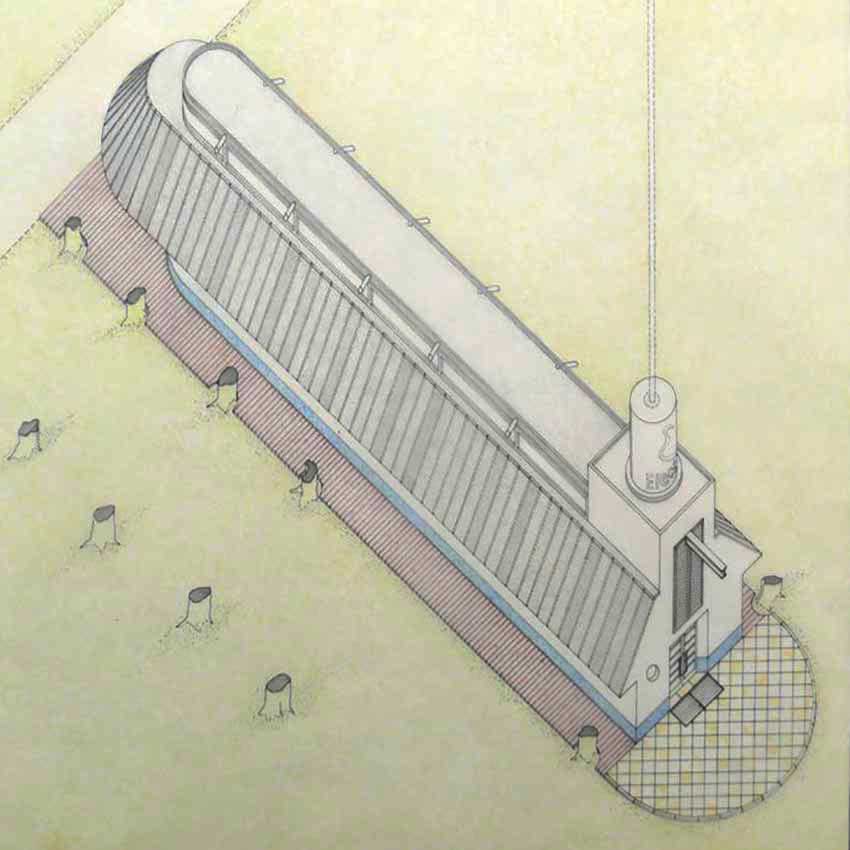In 1991, esteemed architects James Stirling, Michael Wilford, and their associate Thomas Muirhead unveiled their architectural marvel – the Bookshop Pavilion, nestled within the historic Venice gardens of the Arsenal. This particular project is one among a stunning collection of over 25 pavilions, each a masterpiece designed by renowned architects from around the world.
The gardens serve as an architectural museum, encapsulating the evolution and diversity of design over the past 125 years. It beautifully chronicles the varied architectural philosophies and styles, ranging from the symmetry and grandeur of Neoclassicism, the abstract and geometric forms of Neoplasticism, to the raw, exposed materials indicative of Brutalist Architecture.
Bookshop Pavilion Technical Information
- Architects: James Stirling, Michael Wilford & Thomas Muirhead
- Location: Venice, Italy
- Type: Commercial, Book Pavilion
- Materials: Copper, Redwood
- Project Year: 1989 – 1991
- Area: 200 m2
- Photographs: © Dida Biggi
I have a rather ad hoc and expedient attitude to structure, particularly as a design element, and I usually manage to prevent it from intruding in the architectural solution.
– James Stirling
Bookshop Pavilion Photographs
The Iconic ‘Book Ship’ Pavilion
Architects such as Josef Hoffman, Gerrit Rietveld, Alvar Aalto, Sverre Fehn, and Carlo Scarpa have left their marks in the Venice Biennale gardens.
At the end of the 1980s, the British architects James Stirling and Michael Wilford designed the “book ship,” a permanent pavilion to sell books located in a strategic position in the intersection between the Vaporetto station and the exhibition grounds.
The elongated one-story building covers an area of around 200 m2. With a length of about 30 meters, the building is exceptionally narrow (6 meters). The prominent, beveled roof is covered with copper and follows the round shape of the ground plan. The architect covered the underside of the roof with redwood both inside and outside.
To speak of the book pavilion is first to evoke things past, namely the two rows of trees between which the architectural office of Stirling Wilford & Associates situated their building in 1991. With the exception of two or three, these trees have since disappeared, and the book pavilion now stands on a surface sparsely covered with grass. The park has undoubtedly been neglected. Even more than for other buildings in the Giardini, earlier visits to the pavilion need to be brought to mind to regain the meaning of this poetic design.
– Martin Steinmann1
The roof protrusion forms a protected area on three sides of the building in front of the continuous glass strip, which serves as a shop window. At the same time, the roof projection protects the exhibited books from sunshine.
A skylight follows the building’s figure and draws natural light into the interior. An inscription on the roof marks the entrance to the book ship. Access is made between the rows of trees over a semi-circular, paved entrance terrace. The entrance to the building is placed on the narrow side of the building. On this side, the building volume is straight cut off, and the cross-section of the building appears as a facade figure.
This clear-cut contrasts with the rounded shape on the opposite side. The books are on display on a 40-meter-long surface that runs along with the strip window. The bookshelves are located directly below the presentation desk. Inside, the visitor is surrounded by glass, giving the impression of being surrounded by nature. The bookshop is like a boat, thought of as an allusion to the hustle and bustle of the modern city of Venice.
The idea of a boat guided the architects in their design, as the many drawings outlining the design process indicate. The lantern that provides daylight to the space below looks in many of these drawings like the bridge of a ship. The design for the pavilion’s entrance was especially problematic for the architects. The described tower appears only late in the designing process and disrupts the sought-after image by introducing other associations. It is not the only place where this happens. Thus, the color of the roof has also given rise to the image of huts, the kind found in the lagoons covered with reeds.
– Martin Steinmann1
Bookshop Pavilion Plans
Bookshop Pavilion Image Gallery
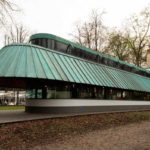
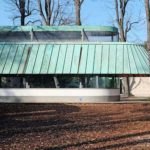
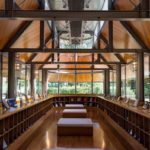
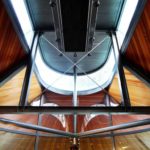
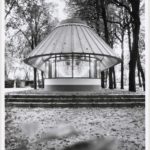
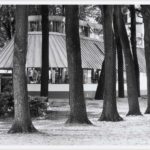
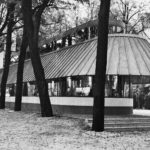
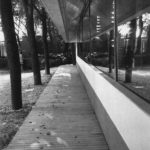
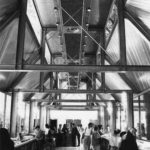
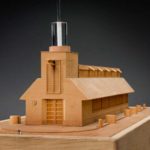


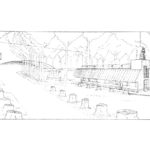



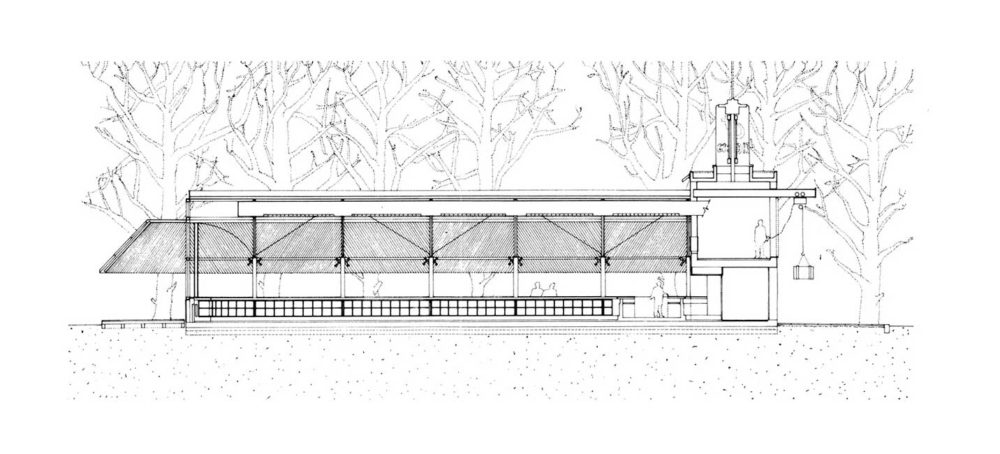
About James Stirling
James Stirling (1926-1992) of Great Britain is considered by many as the premier architect of his generation, an unparalleled innovator in postwar international architecture. Stirling was born in Glasgow in 1926. He was educated at the University of Liverpool School of Architecture and began his practice in partnership with James Gowan in London in 1956. Over a period of seven years, they designed some of the most significant projects of the time, most notably the garden apartments at Ham Common (1955-58), the seminal Engineering Building at Leicester University (1959-63), and the Cambridge University History Building (1964-67).
Other works from James Stirling
- Changing Images by Martin Steinmann, Via commonpavilions

